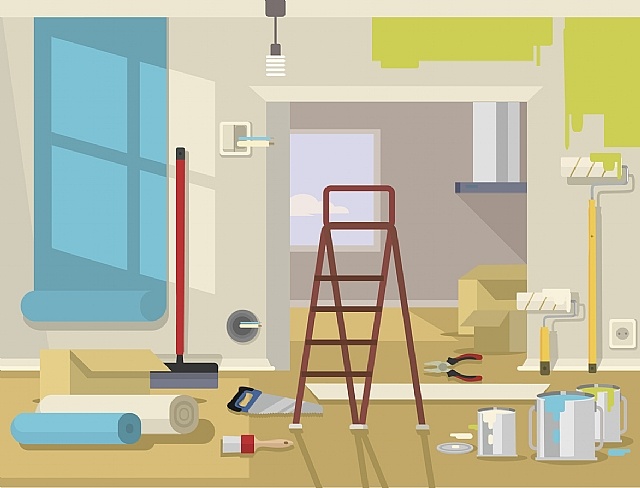Captivated By The Concept Of Transforming Your Home With Color? Check Out Crucial Actions To Develop A Harmonious Shade Combination That Shows Your Design
Captivated By The Concept Of Transforming Your Home With Color? Check Out Crucial Actions To Develop A Harmonious Shade Combination That Shows Your Design
Blog Article
Developed By-Kragh Adcock
When starting a home restoration project, the choice of color scheme can significantly impact the overall ambiance and visual appeals of your space. https://www.wowt.com/2022/01/19/omaha-homeowners-give-caution-dangerous-home-project-with-contractor/ of selecting the best shades involves a thoughtful analysis of numerous elements, from the room's all-natural lighting problems to its existing layout elements. By understanding exactly how different shades connect and affect moods, you can craft a harmonious atmosphere that shows your design and character. Stay tuned to uncover https://reidwgpzg.blogars.com/31969728/improve-your-food-preparation-experience-by-engaging-with-professional-kitchen-area-restoration-service-providers in creating a shade scheme that changes your home right into a haven of aesthetic delight.
Recognizing Shade Concept
In the realm of home improvement, a necessary element to think about is understanding color theory. Shade theory plays a critical role in producing a cohesive and aesthetically enticing space. It entails the study of just how shades engage with each other and exactly how they can evoke different emotions and moods. By understanding the basics of color concept, home owners can make enlightened choices when selecting paint shades, furniture, decor, and devices for their space.
One fundamental idea in color concept is the shade wheel, which contains primary colors (red, blue, yellow), secondary colors (orange, eco-friendly, purple), and tertiary colors (combinations of key and second shades). Recognizing the connections between these shades can aid in creating harmonious color pattern.
As an example, corresponding shades (contrary each other on the color wheel) can create a vibrant comparison, while similar shades (alongside each other on the shade wheel) can offer a sense of unity and cohesion.
Assessing Your Space
Having realized the basics of shade theory and the relevance it holds in developing visually enticing rooms, the next action in the process of remodeling your home entails analyzing your space.
Before picking a shade palette, it is crucial to think about the size, layout, lighting, and existing style of each space. Assess the all-natural light that gets in the area throughout the day, as it can affect just how shades show up. Darker tones might make a space really feel cozier however could likewise make it appear smaller sized, while lighter tones can create a sense of airiness and openness.
Furthermore, examine the area's function and the state of mind you wish to develop. For instance, soothing blues and environment-friendlies are perfect for bed rooms, while vivid yellows and oranges can energize a work area.
Make note of any architectural features or prime focus that you wish to highlight or downplay. By thoroughly evaluating your room, you can make enlightened choices when choosing the ideal shade scheme for your home improvement.
Selecting the Right Color Styles
When it pertains to selecting the best shades for your home renovation, the key lies in understanding the effect different tones can have on a room. Colors can stimulate different feelings and set the tone for the entire room.
Cozy tones like reds, oranges, and yellows produce a comfortable and inviting atmosphere, ideal for living rooms or dining areas. On the other hand, cool tones such as blues, greens, and purples advertise leisure and serenity, making them ideal for bedrooms or restrooms.
Neutral shades like whites, grays, and beiges offer a classic and functional background that can be paired with bolder accents or altered quickly gradually.
Consider the natural light in your area when choosing colors, as it can substantially influence just how a shade appears. Darker tones may absorb light, making a room really feel smaller sized, while lighter shades can reflect light and create an airy feeling.
Do not hesitate to evaluate paint samples on your walls before dedicating to a color to see just how they look in various lighting throughout the day. Ultimately, selecting the appropriate shades has to do with developing an unified and visually attractive setting that fits your individual style and enhances the capability of each room.
Verdict
Finally, picking the ideal shade palette for your home remodelling entails thinking about factors such as size, layout, lighting, and existing design. Understanding shade concept and the emotions different shades evoke can help produce the preferred atmosphere in each area. By thoroughly evaluating your area and choosing the right shades to highlight or minimize features, you can accomplish a harmonious and knowledgeable design that enhances the general aesthetic of your home.
